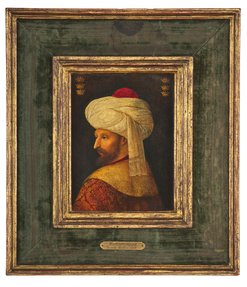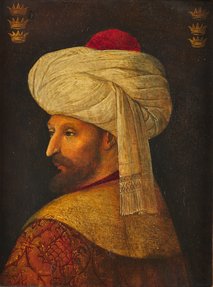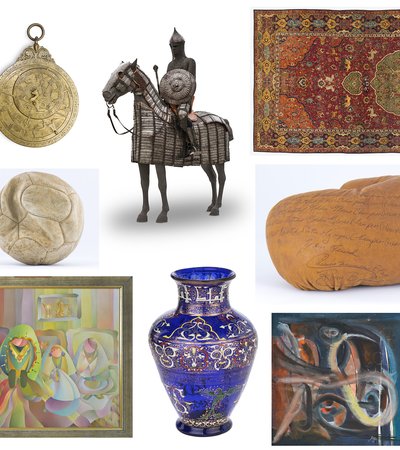In the late 15th-century CE, a remarkable exchange took place between two dominant Mediterranean powers—Venice and the Ottoman Empire. In 884 AH/ 1479 CE, Venice negotiated a treaty with their formidable rivals and trading partners, the Ottomans, ending a period of intense hostility in their ongoing conflict.
Seizing the moment to strengthen his image on the European stage, Sultan Mehmed II (835-886 AH/1432-1481 CE) requested that a Venetian painter be sent to his court. The task was entrusted to Gentile Bellini (1429-1507 CE), a competent and meticulous painter, and one of the republic’s most prominent artisans. He was the first European artist to be invited by an Ottoman Sultan. During this time, Bellini painted the iconic and richly detailed oil portrait while at the new Ottoman capital, Istanbul. Today, the original work is held in the collection of London’s National Gallery today.





